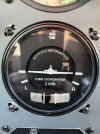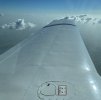Need to understand what causes your aircraft to fly out of coordination in the first place.
An airplane does not naturally fly straight. In level flight, the prop slipstream presses on the left side of the fuselage, causing it to yaw left. Torque also causes it to roll left. Most aircraft have built in means to offset those tendencies. For example, the vertical stabilizer on my Decathlon is offset to the left, which causes the aircraft to yaw right to counteract the slipstream. Other aircraft accomplish this with an offset engine mount. In either case, the counteraction may be fined tuned with fixed or adjustable rudder and aileron trim.
But the counteraction provided by the offset is only correct for one power setting. Add more power and the aircraft will still yaw and roll left. Reduce power and the aircraft will yaw and roll right. This is easy to verify by yourself. Go up and trim for coordinated S&L flight. Then make large power changes and watch the ball slew left or right. And if the aircraft yaws one way, then you have to roll the other way to maintain heading.
So, it could be your aircraft is not flying any more or less crooked than before. Could be you are just flying at different power settings, or your new engine is making more power at the old settings, and you have not tweaked your trim accordingly.
Could also be fuel management. More fuel in one wing causes the aircraft to roll towards the heavy wing. Slight down aileron is required to counteract the roll. Down aileron increases AoA of wing, which increases drag, which causes aircraft to yaw in that direction, requiring rudder to offset.
So before you get spun up about rerigging, play with different trim and power settings. Could be your airplane is just doing normal airplane stuff, and you didn't notice it before.




